|
The remains of a pumping station built in 1922 on the site where West Park is under construction in Diego Martin. Retired journalist Rosemary Store has written that the early development of the area was under Charles Arthur Richards Farrell, the first local city engineer, and not his son Harry Farrell. THE EDITOR: The early development and use of “West Park” was under the auspices of Charles Arthur Richards Farrell who was the first local city engineer and not his son Harry Farrell as has been stated in Newsday twice in December. He was my grandfather.
Charles Farrell must be remembered for bringing potable water to the people of TT as well as for the building of beautiful pumping stations around the city which are now memories and one in West Park, Cocorite (directly opposite The Falls at West Mall) – a relic crying out to be restored. His grandchildren remember being taken on many a Sunday afternoon drive to see the then functioning pumping station in Cocorite. They remember that there were three stations in all around the city, they remember being mesmerised by the huge, gleaming, brass fans and shiny fittings, the curiously shaped windows with curved window panes spotted with diamond shapes of brightly coloured glass, and they also remember the smooth patches of grass surrounding tall trees where they could play. He was commemorated by the Trinidad water production sector when they formed the Farrell Pumping Station Credit Union Co-operative Society Ltd in 1958, which later became the COPOS Credit Union Co-operative Society Ltd of TT. COPOS still functions as a financial co-operative that is member-based and designed to provide financial and economic services to the community. The fifth child of an Irish army officer and a half Carib girl from the Hazel family, Farrell was a brilliant student of Queen’s Royal College (QRC), winning the Island Scholarship twice. The first time he was 16 and it was found the scholarship could not be awarded to him as he was too young. The next year he came first again and chose to study engineering at Edinburgh University. On his return to Trinidad he worked for a short period as a land surveyor until he was appointed Port of Spain city engineer. He was the first local to hold that post. While studying in Scotland, Charles Farrell became acquainted with a fellow Trinidadian who was also pursuing studies in Great Britain. She was Mary Marguerite Brunton, one of twin daughters born to the wealthy landowner in Diego Martin and Chaguanas, Nicholas Brunton and his wife Mary Langton. On their return to Trinidad, the pair married in 1898 and their first son, Arthur, was born at River Estate in 1899. Six other sons followed, all of whom were A students at QRC and went on to become sterling sons of TT, contributing through their official careers and in the sporting arena to the development of this country. Their first son, Arthur, a teacher, became acting head master at QRC and St George’s. QRC students of his era familiarly referred to him as “The Ghost” as a result of his practice to appear almost out of nowhere immaculately dressed all in white. Reginald (Reggie), an engineer, followed in his father’s footsteps to also become the city engineer. Edward (Dr Edward “Teddy” Farrell) became a dentist and is mentioned in a 1938 calypso, Darling Kimberlin, by The Tiger (Neville Marcano) among his preferred legal and medical practitioners. Harry was appointed the city’s town clerk in 1941. Patrick died young while still at QRC. Frederick (my father, called Freddie) became sub-intendant of Crown Lands and Director of Surveys. Francis (Frankie) became the supervisor of Elections and Boundaries. We, the descendants of Charles Farrell, live in hope that his name will be attached to the renewed building, however it is to be used, and that some attention will be given to the man for his enormous work in the development of his country. ROSEMARY (FARRELL) STONE retired journalist From Maracas to Brasso Secco and down the trail towards Paria.
Catching more of our island’s beauty.  Trinidad and Tobago's lone hopeful in Judo for the 2020 Olympic Games in Tokyo Japan, Gabriella Wood, continues to make us proud as she gets closer to making that dream a reality. Gabby who is currently ranked #1 in the English speaking Caribbean and #134 in the world, competed yesterday Saturday 19th at the Scottish Open Championship in Glasgow Scotland where she placed second in a highly competitive group . Ms. Wood who has been training extensively at an International Judo Federation ( IJF) camp in Budapest, Hungary, continue to prepare for Olympic qualifications by training in Europe her next step in this journey is the Paris Grand Slam which takes place 9-10 February and the Dusseldorf Grand Slam in Germany 22-24 February 2019. We look forward to continued success from Gabriella Wood as she continues to make Trinidad and Tobago proud. Source: Leslie Anne Boiselle - Newshound, January 2019
This February, the artist of the month at the Main Branch is none other than a son of the Trinbagonian soil, Winton Bascombe.
Winton is a talented artist who works in water-colour and acrylics. His artistic talent began early in life and continued into adulthood blossoming while he studied at Memorial University, Newfoundland. He now lives here in Ottawa. Prints of Winton’s artwork are up for purchase and the exhibition can be seen until the end of February. Feel free to drop into the Library to enjoy his work on the 3rd floor balcony, Main Branch, at the corner of Metcalfe and Laurier Ave.  The steelband movement has lost yet another icon with the passing of Dr. Clifford Alexis. Mrs. Beverley Ramsey-Moore, President of Pan Trinbago, has expressed her deepest condolences to his immediate family and that of the steelpan fraternity. Mrs. Ramsey-Moore describes him as a steelpan enthusiast, a cultural icon and son of the soil who was an ambassador for Trinidad & Tobago. She added that he will be sorely missed and wished God’s comfort at this time to all those who were blessed with the opportunity to have met him of during his journey. Alexis first visited the United States in 1964 as amember of the National Steelband of Trinidad & Tobago. In 1985, he became a member of the staff of Northern Illinois University (NIU). He worked as a steelpan builder, tuner, composer and arranger. During his time at NIU, Dr. Alexis paved the way for members of the steelband community such as Professor Liam Teague, Seion Gomez, Dr. Mia Gormandy-Benjamin and many others. In 2006, Alexis was awarded by Pan Trinbago Inc. T.C. along with past members of the National Steelband of Trinidad & Tobago. In 2017 he received two (2) honorary doctorates by the NIU and in 2018, he was bestowed with one the country’ s national awards, the Chaconia Medal (Silver), for his work and contribution to the steelpan and his meritorious service to Trinidad & Tobago. Mrs. Ramsey- Moore has announced that a special event will be held this year to honour Dr. Alexis and his contribution to the Steelband Movement. Source: https://whensteeltalks.ning.com/forum/topics/the-steelband-movement-mourns-the-loss-of-dr-clifford-alexis  Applying for a US immigrant visa? Make sure you have your computer-generated polymer birth certificate, according to an update from the US Embassy in Trinidad and Tobago. In an update shared to social media on January 28, 2019, the US Embassy said this is required for all immigrant visa applications from February 1, 2019. "#VisaUpdate: Starting February 1, 2019, U.S. Embassy Port of Spain will require the new green polymer, computer-generated civil documents issued by the Registrar General." "These include Trinidad and Tobago birth certificates, marriage certificates, and death certificates. All previous versions of these civil documents will no longer be accepted." "Please ensure that you have your updated documents prior to your scheduled immigrant visa interview in order to avoid any delays in visa processing," the Embassy said. According to the US Bureau of Consulate Affairs, a citizen of a foreign country who wishes to enter the United States must first obtain a visa, either a nonimmigrant visa for a temporary stay, or an immigrant visa for permanent residence. Visitor visas are nonimmigrant visas for persons who want to enter the United States temporarily for business (visa category B-1), for tourism (visa category B-2), or for a combination of both purposes (B-1/B-2). For more information on the US visa application process see here: https://bit.ly/2B8dHpX To search for your birth certificate details and order a polymer certificate online, click here: https://bit.ly/2KFSXgl To contact the Registrar General's offices see here: https://bit.ly/2Nfv8wS Source: The Loop TT, January 2019 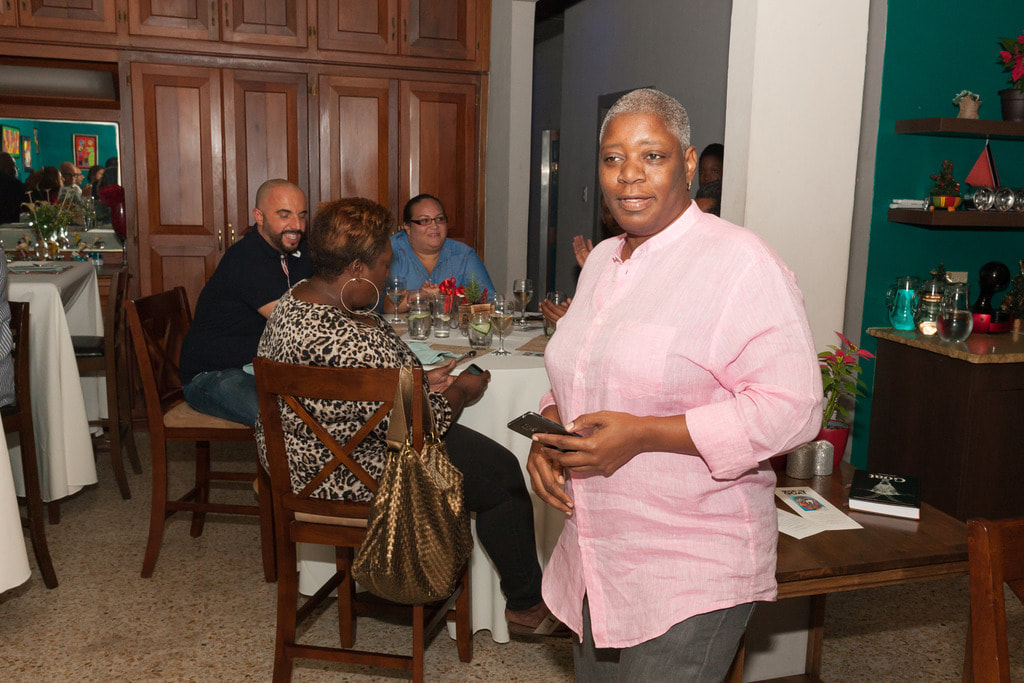 When it comes to goat meat, Caribbean people are fond of cooking it the same way: in curry. One woman is intent on changing that. Franka Philip, a popular media personality in Trinidad and Tobago, wants to expand the variety of ways goat meat is cooked, educate Caribbean people about goat meat in general and improve the goat industry. This October, she will be introducing Goatober to the Caribbean, starting first in T&T. Goatober began when an American woman, Erin Fairbanks and renowned cheesemaker Anne Saxelby, wanted to end the practice of euthanizing young male goats that the dairy industry had no use for. Goatober was created as a month-long celebration on the menu of New York restaurants as a way to promote goat meat as delicious, ethical and sustainable. In 2016, UK chef James Whetlor introduced Goatober to the UK and to mainland Europe the following year. “I follow Cabrito, a website run by James who is a chef concerned about waste in the dairy goat industry. You only need girl goats for milk and cheese and they would euthanize boy goats so he started to raise and rear boy goats and sell to restaurants. A friend connected James and me and we hit it off. I discovered he was doing Goatober which started in the States. James formalised it in the UK and is moving it through Europe and I said hey, Trinidad need to get in on that, we love goat and our meat is pretty decent and I just decided I am doing this,” said Philip. On December 9, Philip launched the first in a series of events leading up to Goatober. The intimate dinner at Aroma Culinary Studio in Woodbrook, Port-of-Spain, was attended by specially invited friends including top chefs in the country and representatives of the Goat and Sheep Society. An Italian trained T&T Chef by the unique name of Bianca Bianco whipped up the menu which included steamed goat wontons, hops with sliced goat meat, goat and cheese ravioli and corn cake with goat milk, sour cherry ice cream, and coconut tuile. It was her first time working with goat meat. “We used James’ book Goat as a guide and adapted recipes to suit our palette. We tried to get a nice Caribbean flavour,” said Philip. he said one of the challenges they faced in preparing the dinner was the butchery of the meat. “We practiced on half a goat and it was really badly butchered. We wanted to get bones to make stock and that wasn’t readily available because of how the meat was cut. There are different little elements we realise if we need to bring this up to a different standard and accessibility we have to work with the butchers,” said Philip, who has a deep interest in the way meat is cut after living in the UK for over 13 years. Deep diving into the world of food In an age when food blogging has exploded in popularity and self-professed foodies are everywhere, Philip’s foray into food may seem opportunistic. But when blogging was in its nascent stage in T&T, around 2007, Philip ran a food blog called Can Cook, Must Cook where she experimented with recipes, wrote about personalities, explored cooking in a Caribbean style and did book reviews. She had been living in England since 2000 following her graduation from the University of Sussex. The blog, she said, was started out of anger. “Going to England I saw what was on offer. In every one of the big newspapers you had a cooking section, food TV was more accessible and I became more interested in food. I lived with Bostwanian, Norwegian and English people so I was exposed to different types of food. At Sussex University there was a very diverse postgraduate cohort so I got to meet different kinds of people, ate different types of food but Caribbean food was not represented. I thought I should pitch an idea for Caribbean food to a media outlet. The editor of UK TV Food said she loved the idea but she didn’t think Caribbean food was anything to shout about and I got damn vex. That is how I started the blog. Philip’s passion for food was sparked from an early age. Her late mother, she said, was a really good cook and she spent a lot of time with her in the kitchen. An only child, Philip accompanied her mother to the market and admired the orderly fashion in which she would put away her goods and prep for the week. “That helped her to manage cooking during the week. She wasn’t a gourmet type chef but what she cooked she did very well. Daddy was into oxtail, cowheel, and souse and Mummy would make oxtail soup but in a nice way, she used plenty greens and had a very balanced approach to the way she looked at food,” Philip recalled. When cable TV arrived in T&T that opened up a world of food for Philip who would devour food shows on the Travel Channel, one in particular that took viewers across the USA exploring different cuisines. As a journalist in the Trinidad Express newspaper, even before she left for England, Philip got even more exposure to food. From 1992 to 1996 she was the social events reporter which allowed her to interact with chefs at all types of events, and they were only too happy to fill her curious mind with their knowledge. In England, Philip worked at the BBC and became friends with those who worked in the food section. She said Susan Low, an editor at BBC with a progressive approach to food, encouraged her to write for them. The Food Editor who happened to be Susan’s husband, Guy Dimond, he was very encouraging, he taught a course at City University on food writing and he would ask me to come in and talk to students. I did that for a while and I started to meet more people in food such as Dan Lepard, a well-known baker and food writer in the UK. We became friends and I did a couple Caribbean Beat stories on things we did together. Two recipes we did ended up in his book Short and Sweet. I became familiar with Yotam Ottolenghi, he has a series of books that are very well-known,” she said. Philip’s plan was to pen her own book about Caribbean food stories but life took another course. Renewing her passion In 2012, Philip returned to T&T when her mother was diagnosed with pancreatic cancer. She died within months of her diagnosis and Philip had to look after her father, who also passed away a few years later. “I had to make a decision to stay in Trinidad and I had to start working. I was in a high-pressure job at the Trinidad Guardian and I put food on the back burner. I maintained an interest but my actual forays, cooking a lot and experimenting, was on the back burner,”’ she said. In 2018, Philip left the Guardian and started to renew her passion for food. “I started to cook more, started going back through cookbooks, going through magazines and rekindled that feeling. I started to get excited by food again,” she said. She credited a close friend for reminding her about her love for food. “I was reminded by my friend that I get more excited when I talk about food. It really rang for me. I continued to write for Caribbean Beat. I have been doing that since 2007 and it is a gig that I love, it gets me to write about things I love and I started to get more passionate about doing it. That, combined with the buff from my friend, made me dig out the notes about the book I want to write,” she said, also crediting her partner Ardene, who, she said, has been very encouraging and supportive. Philip sees her role as stimulating the food industry in different areas. She is keen on food security and sovereignty, innovations, challenges in eating local, issues affecting farmers and wants to educate people about where food comes from. Philip, who runs a digital platform called Trini Good Media (TGM), intends to turn Can Cook, Must Cook into a food podcast where those topics can be explored. Through Goatober, she will execute her plans to encourage more adventure and creativity with local food, stimulate more activity in the goat industry which has already begun improvements to deliver higher quality goat products and put the Caribbean on the map. Source: The Loop, January 2019 |
T&T news blogThe intent of this blog is to bring some news from home and other fun items. If you enjoy what you read, please leave us a comment.. Archives
June 2025
Categories
All
|

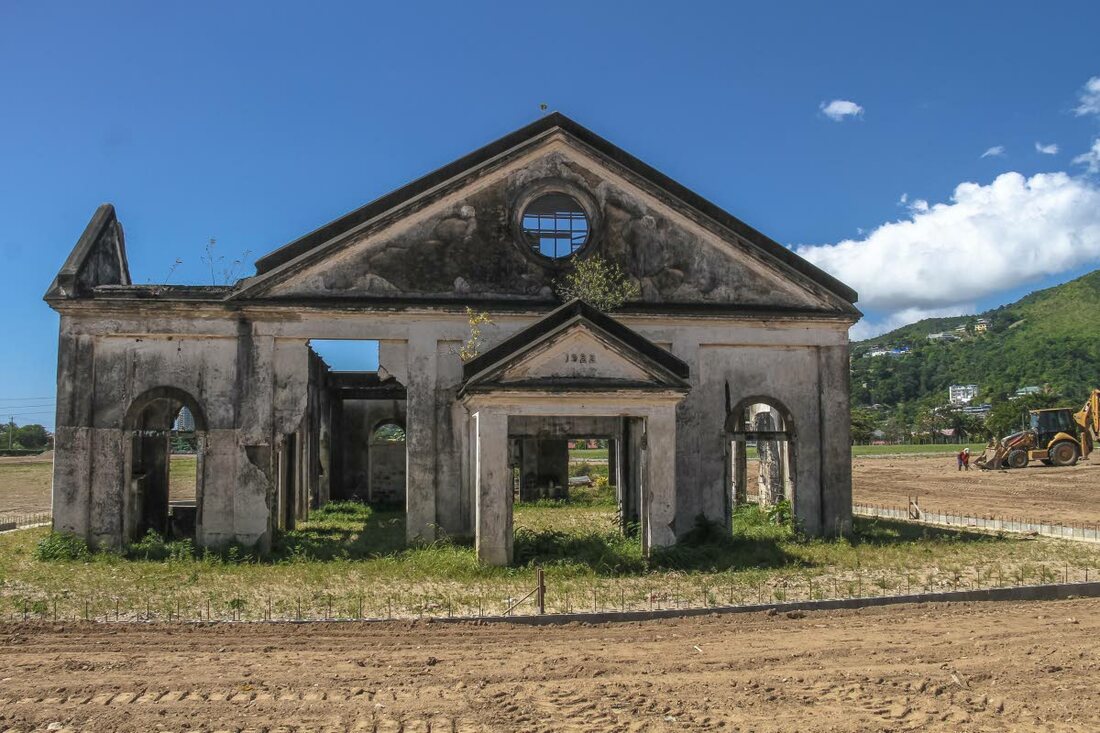






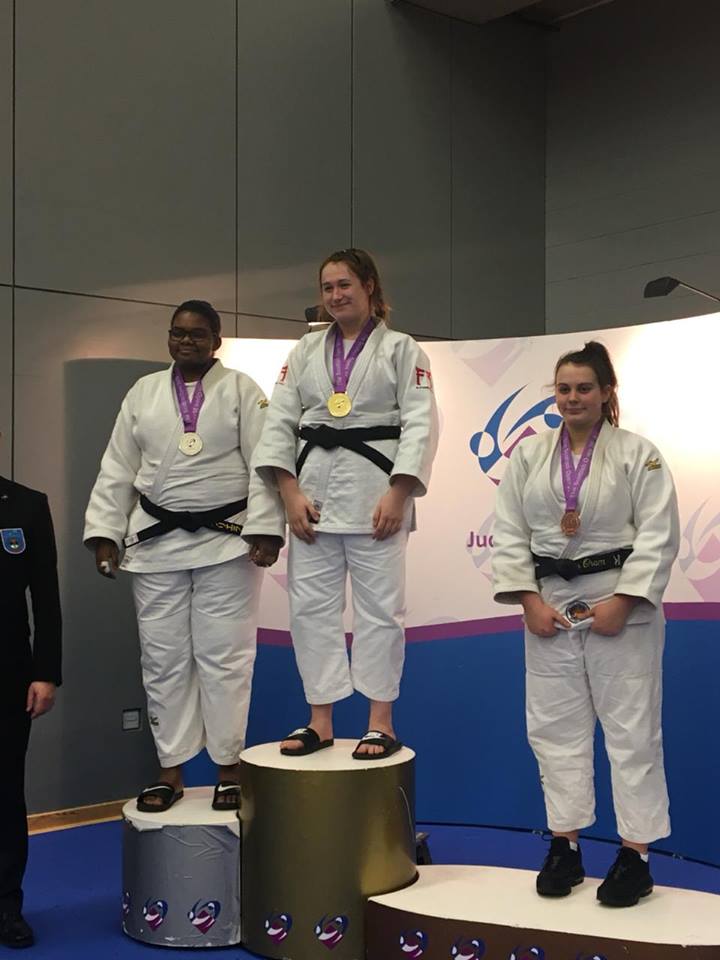
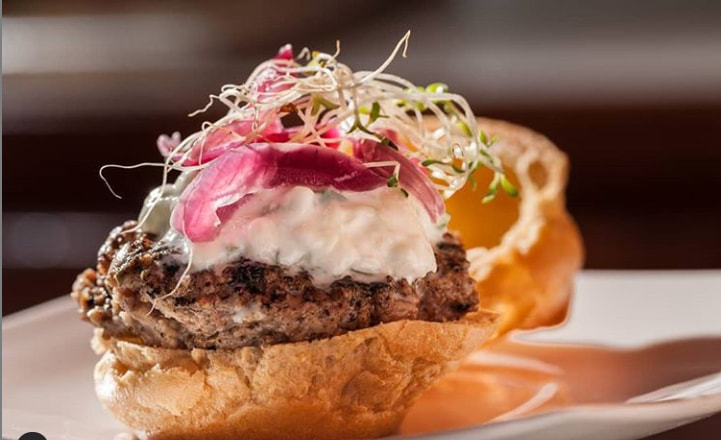

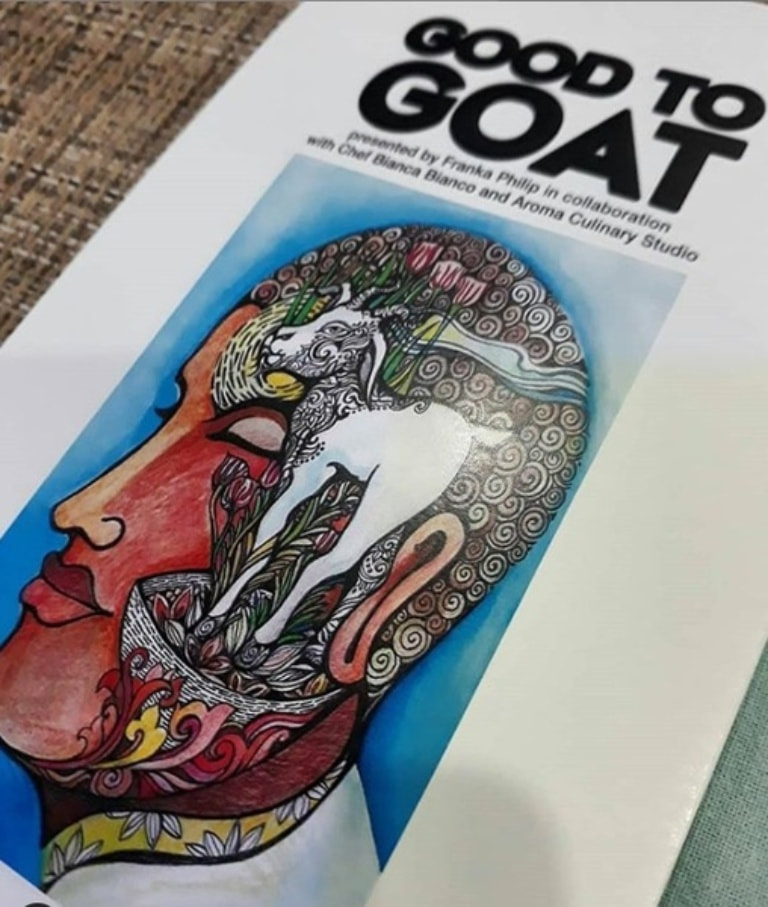

 RSS Feed
RSS Feed